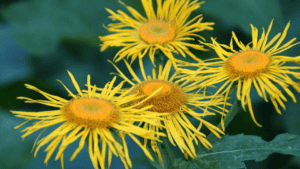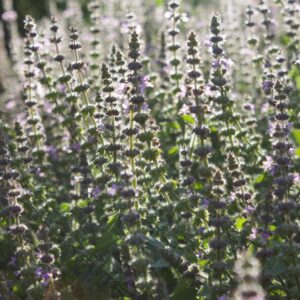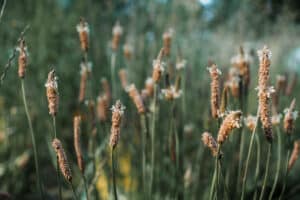Do you need to know botany to be a great herbalist? Since learning botany is like learning a new language, it’s a fair question. After all, if you won’t use it, is it worth becoming fluent in it?
Being an herbalist means a lot of things: Working with people, plants, and being the bridge between the two. Although it might seem like studying botany is an important part of this process, the answer to this question might surprise you.
In today’s blog post, you’ll discover:
- The three layers of botany and how you can use them in your work with herbs
- When learning botany is helpful as an herbalist, and when it’s not
- The #1 most important piece of botany every herbalist should know
- How knowing botany can help you prevent harming people and spot bad herbal products
- My top book recommendations that make learning botany easy for anyone
Table of Contents
The other day, a student asked me an interesting question: “Do you really need to know botany to be a good herbalist?” This left me thinking about my own questions on the topic. Does having a deep understanding of botany really improve your skills as an herbalist? It’s a question worth exploring, and if you’ve been wondering this too, you’re in good company.
Firstly, let’s start with definitions. You’ve probably heard the term thrown around, but what exactly does botany mean? Simply put, it’s a scientific field that meticulously studies plants, with a focus on their physiology, anatomy, ecology, and distribution. Moreover, it aims to classify plants based on shared characteristics and similarities, creating organization frameworks in the plant world.
In essence, botany serves as the scientific language for describing plants. Like mastering any language, becoming ‘fluent’ in botany requires a lot of dedication and time. Truthfully, I don’t believe every aspect of botany connects with herbal medicine. However, there are certain aspects I believe are crucial for herbalists to know.
These include the morphological descriptions, identification characteristics, naming conventions, nomenclature, and knowing how to classify a plant family, genus, and species. Although this might leave you feeling intimidated, learning to speak the language of botany can be a rewarding and fulfilling experience. The key is remembering that it’s a marathon, not a race, and to take the learning process one step at a time.
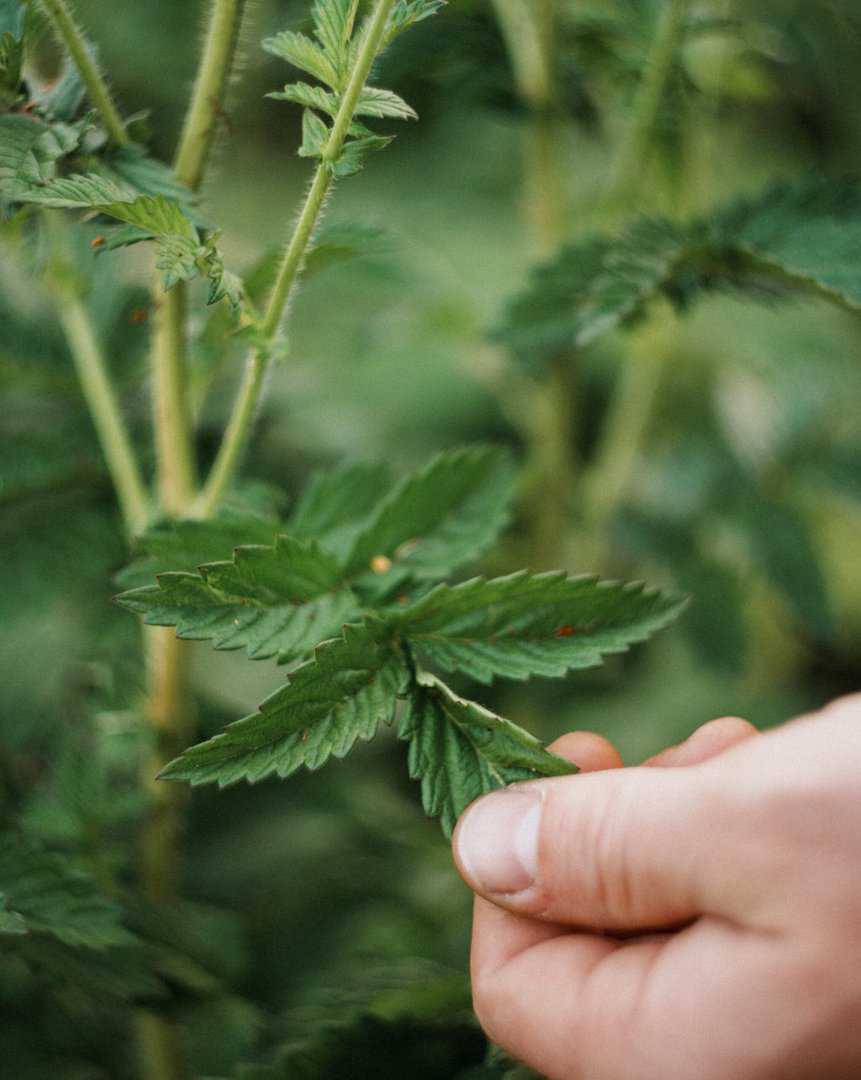
Key Layers of Botany
Botany has different layers, with some more important to understand as herbalists than others. The three key layers include learning how to describe plants, how to name them, and how to organize them in the larger plant kingdom. Let’s demystify each one and explain what they mean in simple terms.
Morphological Descriptions and Identification Characteristics
Starting with the basics, this layer is all about studying how plants look and how to tell them apart. The technical term for this is morphology, or, their key identification characteristics. In this step, you’ll learn how to identify a plant accurately, sometimes using a microscope or a small magnifying glass (loupe) to see it up close.
If you’ve ever opened a field guide or plant identification book, you might have felt confused by their terminology. They often have large sections dedicated to a single plant part, such as the leaves and use terms like “serrated” and “glabrous.” Sometimes i’ve needed to look up 3-4 words just to understand a single sentence! It can feel like learning a new language, and in a way, it is—a language specific to plants.
Using layman terms, you might call the stick of a plant a stem. But in botany, there are different words for when a stem is connected to a flower or a leaf (pedicel and petiole, respectively). There are lots of details to learn about how plants are described, and it can be very tedious to learn them all.
However, knowing how to describe a plant in detail can make you feel confident when comparing or describing plants. It’s also helpful for identifying plants you find in nature. This skill is essential if you plan on gathering plants from the wild. It can also help you understand whether the herbal products you bought online have been adulterated or not. Although this isn’t super common, knowing how to properly identify plants can ensure you’re using the best quality herbs. With the best herbs possible, your medicine will be that much more effective.
Naming Conventions and Nomenclature
Another crucial layer of botany for herbalists is understanding how plants are named. Botanical naming conventions rely on Latin names, which differ significantly from common names. For instance, an herb may go by one common name in your town but by a different one in another, causing confusion. For example, you might know an herb as Hibiscus while someone else might refer to it as Roselle. This can make it hard to understand whether you and another person are talking about the same herb. To make matters even more confusing, there are some plants that all share the same common name. But everything is clarified when using the Latin binomial of a plant, in this case, Hibiscus sabdariffa. By following the Latin naming conventions, you can be sure that you and another herbalist halfway around the world are talking about the exact same plant.
The beauty of botanical nomenclature lies in its precision regarding genus and species. In a binomial, the first word is the genus of the plant (Hibiscus) and the second word is the species (sabdariffa). These are the most specific layers of botanical taxonomy. Botany organizes plants into broad categories, such as flowering and non-flowering plants, whether they have a single or double seed leaf (monocotyledons or dicotyledons, or monocots and dicots for short) with more subdivisions becoming increasingly specific. This systematic approach helps clarify plant identification among herbalists, making it much easier to be on the same page and talk about the same herbs accurately.
Classifying Plant Family, Genus, and Species
For herbalists, understanding plant families, genus, and species is crucial. Familiarity with plant families is particularly helpful since it helps you recognize shared morphological, structural, and medicinal characteristics among plants within the same family. Take, for instance, the Mint family, or Lamiaceae. Plants in this family, like Peppermint (Mentha piperita) and Basil (Ocimum basilicum), often have square stems, opposite leaves, and a distinctive aromatic quality. Many of these plants also share medicinal properties, such as being carminative for the digestive system.
Similarly, plants in the Rosaceae family often have a sour flavor and possess cooling and inflammation modulating properties, which can help alleviate heat, irritation, inflammation, and oxidation. This is particularly true for the cardiovascular system. The Apiaceae family includes many food plants and medicinal herbs like carrots, Angelica (Angelica archangelica), Osha (Ligusticum porteri), and Lomatium (Lomatium dissectum). However, this family also contains some highly toxic plants, such as Water Hemlock (Cicuta maculata) and Poison Hemlock (Conium maculatum). This is why recognizing morphological descriptions and identification characteristics is so important—so you don’t accidentally pick toxic lookalikes that are in the same family.
Understanding plant families not only helps you recognize unknown plants, but also deepens your understanding of their medicinal properties over time. During my time at Bastyr University, we organized our plant studies primarily by family rather than organ system or actions. This approach provided a solid learning framework for my path in herbal medicine.
Knowing a plant’s Latin binomial, family, genus, and species is essential for herbalists since it’s the only way you can be sure that you and another herbalist are talking about the same plant. Latin names provide a standardized way of referring to plants. While common names may vary widely by region, Latin names serve as a universal language in herbalism, ensuring accuracy around the world. The standardization of naming conventions is one of the biggest contributions botany has gifted the field of herbalism and it’s the reason why you can purchase an herb grown in an entirely different continent in the world and still be sure that it’s the plant you’re looking for.
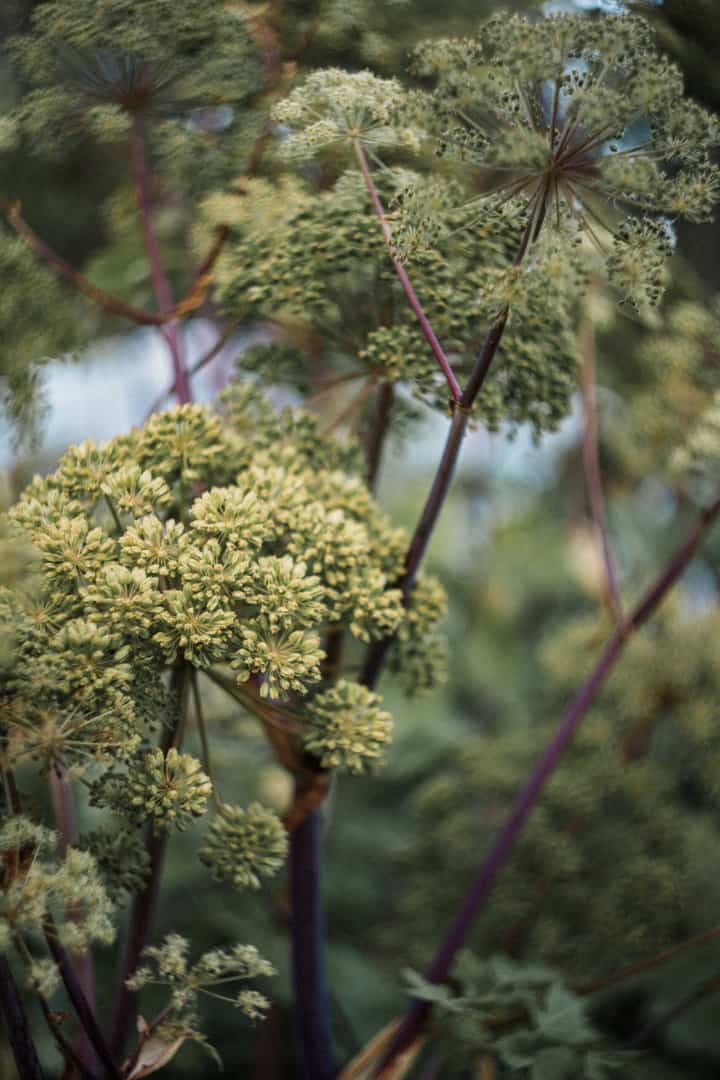
When Knowing Your Botany is Useful as an Herbalist
Now, to answer the question of whether you need to know botany to be a clinical herbalist… I would say no. The primary role of the clinical herbalist is to sit down with someone, figure out what’s ailing them, and then recommend the right herbal remedies to get to the root of their imbalance. You don’t need an in-depth understanding of botany to excel in this role. However, that doesn’t mean you shouldn’t know any botany. One piece of knowledge I believe every clinical herbalist should have, as mentioned, is knowing the Latin names of herbs.
But aside from that, botany doesn’t play a major role in the day-to-day clinical practice of herbal medicine. Sure, there’s a lot to learn to administer remedies and assist clients, but from a clinical standpoint, botany isn’t typically at the top of the list.
That said, herbalism extends far beyond clinical settings. There are various ways you can practice herbalism, and the importance of botany varies depending on your field. For instance, if you’re into wildcrafting, plant identification, and knowing local remedies, then botany is extremely relevant— essential in fact— and you’ll need to learn how to use a field guide and region specific plant keys to identify plants accurately and safely.
While some herbs are easy to identify with minimal risk of confusing them with toxic lookalikes, others require careful attention and have lethal doppelgängers. Mistaking a harmless plant for a toxic one can have grave consequences. Therefore, understanding botany is crucial for wildcrafters.
Over the years, there have been numerous incidents of people mistakenly harvesting poisonous plants, such as mistaking Poison Hemlock (Conium maculatum) for Wild Carrot (Daucus carota) and dying as a result. This is all to say that having a solid understanding of botany, including knowledge of lookalike plants and key differences between similar species, is essential for your safety and success as a wildcrafting herbalist. Not everyone is called to work with wild plants, but if you are, botany is an essential skill you’ll need to learn.
Growing and Purchasing Medicinal Herbs
Similar to the reasons above, it’s good to know botany if you want to farm or cultivate medicinal herbs. While you may trust the herbs you purchase online, having the ability to verify them yourself provides added security. People make mistakes, so knowing how to ensure they’re the correct plants can improve your confidence.
Generally, your botany knowledge is more applicable to fresh herbs than dried ones. However, there are still methods you can learn to verify the authenticity of dried plants. Unfortunately, adulteration does occur, sometimes with severe consequences. For instance, there have been cases where Coltsfoot (Tussilago farfara) was adulterated with Butterbur (Petasites hybridus), an herb that contains toxic pyrrolizidine alkaloids. While Coltsfoot also contains some of these alkaloids, its levels are much lower compared to Butterbur, not to mention they’re the much less toxic types of PA’s. Butterbur has high levels of the most toxic forms of macrocyclic PA’s, an adulteration has led to some people developing sinusoidal obstructive syndrome (SAS) in the liver. Not a good thing.
Thus botany can be useful to make sure you’re wildcrafting or growing the correct herb. This can be helped by making sure you’re obtaining seeds from a quality supplier, but it’s never a bad idea to double check. Mistakes can be made. This is especially true for purchasing fresh plants from a farm or a wildcrafter where you plan on preparing medicine. I’ve had wildcrafters send me “Skullcap” only to key it out to be Hedge Nettle (Stachys palustris). Always assume the worse and make sure you properly ID fresh herbs yourself.
Dried herbs can be properly identified as well, though the process is a bit more involved. This usually means tasting the remedy, doing macroscopic identification, sometimes chemical evaluation, and even microscopic analysis. I always recommend purchasing herbs from reputable bulk herb suppliers with a solid QA/QC (quality assurance, quality control) policy in place, and that can supply you with a valid certificate of authenticity form (COA).
In summary, do you need to be a botany expert to excel as a clinical herbalist? Not really, but having some knowledge of botany definitely makes you a more well-rounded herbalist. There are naturopathic doctors and clinical herbalists who don’t even know what the herb they’re working with looks like, and this is a very limiting relationship. If you want to develop a deeper understanding of the herbs you work with, I think it’s important to get out into the field and learn what they look like. Botany is where you’ll learn to do that.
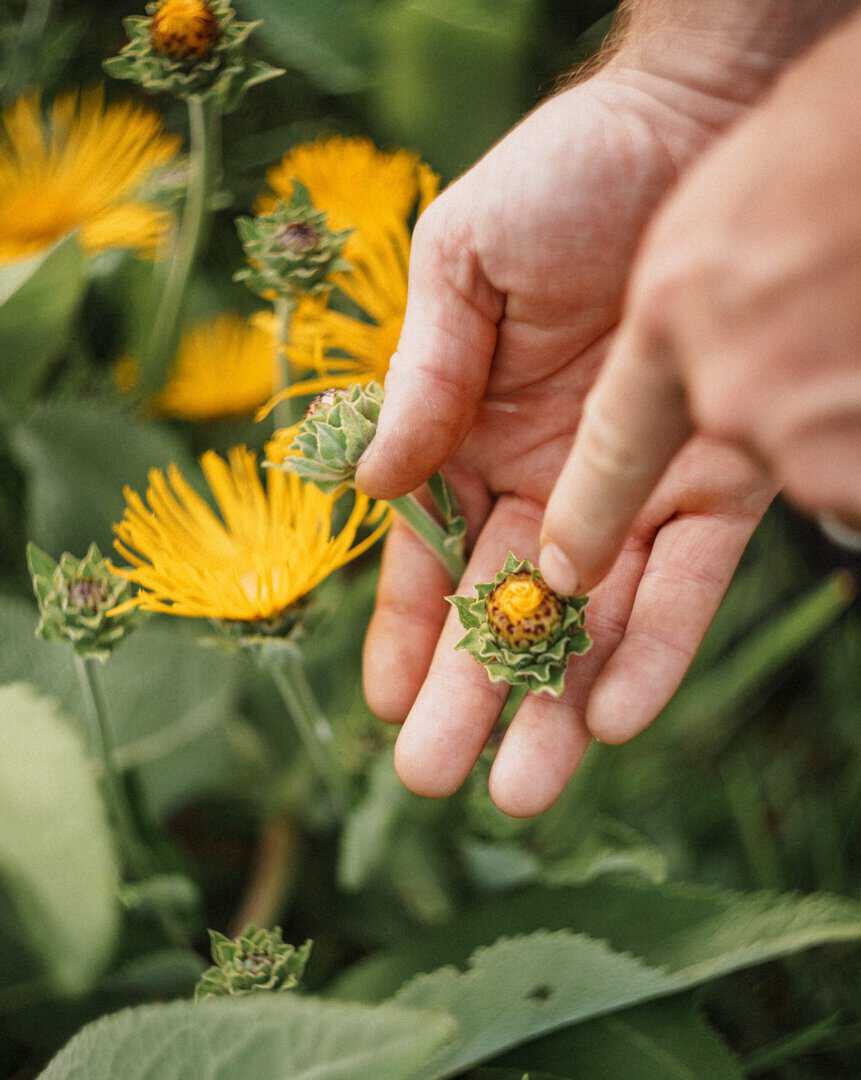
Botany Books and References
Talking about the importance of botany is one thing, but studying it is a whole other task. To make it less intimidating, I want to share some of the best botany books and references available.
First up is “Botany in a Day” by Thomas Elpel. This book was a staple during my botany studies at Bastyr University, and I can’t praise it enough for its simplicity and approachability. Additionally, having botany glossaries on hand can be incredibly useful. These resources help clarify botanical terms and concepts, making it easier to understand terms like “raceme” or “scabrous.”
For those living west of the Rocky Mountains in the United States or Canada, I highly recommend Michael Moore’s books. Moore is not only a renowned herbalist but also an exceptional botanist. His works, such as “Medicinal Plants of the Pacific West,” “Medicinal Plants of the Mountain West,” and “Medicinal Plants of the Desert and Canyon West,” offer comprehensive botanical descriptions complemented by drawings and photographs.
In addition to these resources, consider getting your hands on “Peterson Field Guides” tailored to your region. These guides provide valuable insights into local plant identification and are indispensable tools for mastering botany. Furthermore, it’s beneficial to explore wildflower guides and expand your references for ventures into the wilderness. The USDA offers a list of recommended books used by their botanists, which are reliable resources you can use.
If wildcrafting and plant identification are a passion of yours, consider taking a class at a local community college. These courses often provide hands-on field experiences led by knowledgeable instructors and offer opportunities to connect with fellow botany enthusiasts.
While learning botany online can be challenging, building a community of like-minded individuals can make the process more enjoyable. Exploring local courses and community college offerings give you the chance to immerse yourself in the field (literally and metaphorically) and connect with others who share your passion.
So while you might not need a comprehensive understanding of botany to be a good herbalist, it will definitely enrich your experience as one. I cannot emphasize enough how important knowing your Latin names is, and how having some basic botany knowledge can increase your confidence as an herbalist. With a wide array of resources available, the world of botany is yours to explore. All you need to get started is a guide book and the great outdoors.


